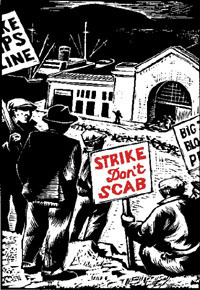|
|
|
|
|
|
Railroads seek 1-person crews for freight trains threatening safety of workers and communities
Railroads seek 1-person crews for freight trains threatening safety of workers and communities
http://www.detroitnews.com/story/business/2014/12/25/railroads-seek-pers...
Josh Funk, Associated Press 10:59 p.m. EST December 25, 2014
Omaha, Neb. — When American freight trains delivered cargo after World War II, the steam-belching beasts commonly had seven people aboard — an engineer, a conductor, up to four brakemen and a fireman.
Trains have since grown much longer, seemingly stretching to the horizon and often taking 20 minutes to pass through a crossing. And crews have been reduced in size — to five people in the 1970s and two in 1991. Now U.S. railroads want to put a single person in charge of today's huge locomotives, taking another step toward a future in which the nation's rail-cargo system increasingly could resemble toy train sets — highly mechanized networks run by computers or distant controllers.
For the moment, freight trains generally have two people aboard — an engineer who drives the train and a conductor who oversees the long line of cars. Railroad executives want to reduce that to a lone engineer, saying advances in safety systems, including a new automatic braking system under development, could minimize risks.
But labor groups and people who live near rail lines are skeptical.
"These trains are 7,000 tons going 50 mph. You have to have two people," said J.P. Wright, an engineer for CSX railroad in Louisville, Kentucky. "It's mindboggling to me that the railroads would go this far with it."
The mayor of the Chicago suburb of Barrington asks how one person could split a stopped train to allow traffic and first responders through in the event of an emergency.
"There may be technology to compensate for some of it, but I would have questions," Karen Darch said.
The one-person crew idea is being pitched while railroads are working to increase train length because delivering more cars usually is more profitable, and they're working to expand capacity to handle even more freight as the economy improves.
Federal regulators have pushed back against the proposal, saying they may require two-person crews.
The Association of American Railroads trade group says accident data does not support requiring two-person crews. It has opposed any effort by the government to prohibit one-person trains.
During a cross-country rail journey, the engineer is at the train's controls. The conductor is responsible for the cars behind the locomotive, communicating with dispatchers and providing a second set of monitoring eyes.
Labor groups and regulators argue single-person crews, even with the new braking system called "positive train control," would make trains more prone to accidents.
"We're transporting chlorine through your town in the middle of the night completely fatigued with the possibility that the computer is going to make a mistake," said Wright, a third-generation railroader and co-chairman of the advocacy group Railroad Workers United.
The National Transportation Safety Board says more than two dozen train crashes since 2004 could have been prevented by positive train control, which was required by a 2008 law approved after a commuter train collided head-on with a freight train near Los Angeles, killing 25 and injuring more than 100.
The system is aimed at preventing human error by using GPS, wireless radio and computers to monitor train position and speed. It can stop trains from colliding, derailing because of excessive speed, entering track under maintenance or traveling the wrong direction because of switching mistakes.
Congress set a 2015 deadline for having the system in place, but it won't be ready by then. Railroads blame technical challenges and problems getting regulatory approval for thousands of antennas needed to make it work.
The major railroads appear committed to making one-person crews a reality. They declared in 2004 that they wanted to negotiate a nationwide pact for one-person crews, but courts ruled each railroad had to negotiate individually with its unions.
-

- Log in to post comments
- Printer-friendly version



